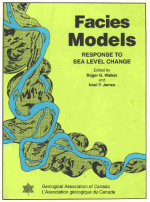Добрый день, Коллеги. Важное сообщение, просьба принять участие. Музей Ферсмана ищет помощь для реставрационных работ в помещении. Подробности по ссылке
Facies models. Response to sea level change / Фациальное моделирование. Реакция на изменение уровня моря
Features of recent sediments and ancient sedimentary rocks can be combined and condensed into idealizations or models that characterize particular sedimentary environments. This combination of features from modern and ancient situations has been emphasized from the earliest days; in 1893 Johannes Walther (quoted by Middleton, 1973, p. 981) "explained that the most satisfying genetic explanations of ancient phenomena were by analogy with modern geological processes".A good model embodies a large amount of information from different examples of the same depositional system, for instance, meandering river channels. It is therefore an excellent point of reference for the interpretation of new examples of the same system, and allows predictions to be made from limited amounts of data. The predictive capabilities of models have largely been used in the exploration for oil and gas (e.g., Chapters 3, 12, 13, 16, 17), and to a lesser extent in exploration for minerals hosted by sedimentary rocks. However, the broad understanding of depositional systems is becoming increasingly important in modelling the movement of ground water and pollutants through surficial unconsolidated sediments, where the movement is partly a function of the geometry of permeable and impermeable layers (Chapter 5). This geometry largely depends on the depositional processes operating in the original sedimentary environment. Facies models also embody ideas about how natural sedimentary systems work, and to what extent they can be "managed". For example, a general understanding of beaches and barriers (Chapter 10) contributes to the solution of coastal erosion problems. In the Mississippi Delta, there is a large annual land loss due to regional subsidence and delta inundation; these aspects of delta behaviour are part of the general deltaic facies model (Chapter 9). <...




